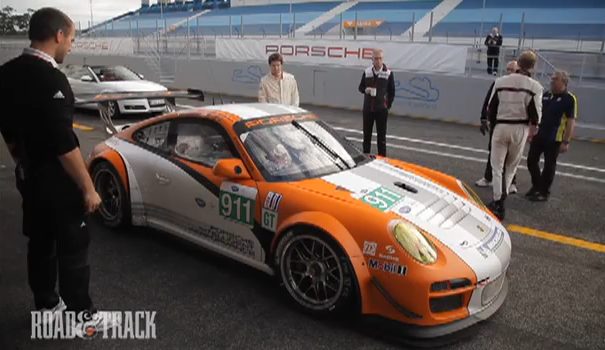Hear the term “hybrid,” and what comes to mind? A Toyota Prius parked in the Whole Foods lot, plastered with “Free Tibet” and “Coexist” stickers? A Honda CR-Z, getting walked by mopeds off of a traffic light? Chances are good that you brain isn’t conjuring up images of race cars, especially one with a Porsche crest on it, but that may change in the not-too-distant future. Hybrids can be built to boost fuel economy, or they can also be built with an emphasis on increasing performance.
Take the Porsche 911 GT3 R Hybrid, for example. It uses a conventional flat-six engine to power the rear wheels, but also has electric motors to power the front wheels. Electricity isn’t stored in batteries or capacitors, but instead in a cockpit-mounted flywheel; when needed (as when exiting a corner), the flywheel can supply enough energy to power each of the 102 horsepower electric motors for up to six seconds.
In this Road & Track video, technical editor Shaun Bailey shows us what it’s like to drive the GT3 R Hybrid around Portugal’s Estoril racetrack. Bailey downplays the noise from the flywheel mounted where a passenger seat usually sits, but I’ve heard others describe it as “unnervingly loud.” There’s also the pucker factor to consider; although the flywheel is enclosed in a stout, armored casing, should something go wrong the results would be… unpleasant for the driver.
Don’t be surprised when performance-oriented hybrids begin appearing over the next decade or so, changing our perception of what the term “hybrid” means to enthusiasts.




